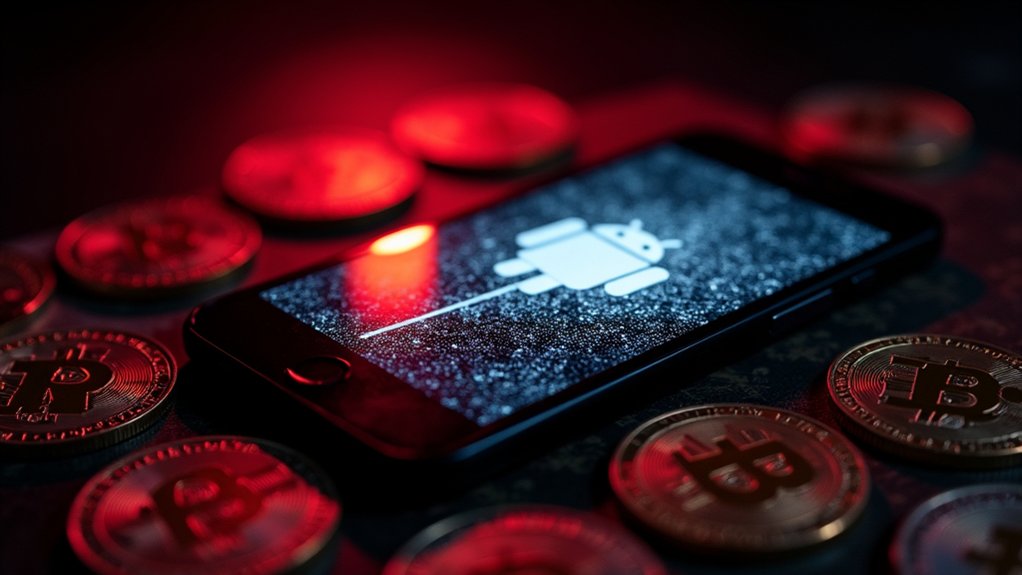Fake Android Phones Preloaded With Crypto-Stealing Malware Exploit Russian Users
Counterfeit Android phones preloaded with Triada malware have infiltrated the Russian market, stealing over $270,000 in cryptocurrency. Over 2,600 infected devices have been reported so far. The sophisticated trojan waits patiently before replacing wallet addresses during transactions—victims never see it coming. These digital wolves in sheep's clothing exploit user trust while disguising themselves as legitimate apps. The true cost of a cheap phone? Way more than the sticker price.
While smartphone shoppers hunt for bargains online, cybercriminals are busy planting dangerous malware in counterfeit Android devices. These knockoff phones aren't just cheap imitations—they're digital landmines. The Triada Trojan, a particularly nasty piece of malware, comes pre-installed on these devices, waiting patiently to steal cryptocurrency and sensitive data from unsuspecting users.
Russia has been hit hardest by this scheme. Over 2,600 confirmed cases of Triada-infected devices have been documented there, with financial losses topping $270,000 in stolen cryptocurrencies. Turns out, that "amazing deal" on a high-end Android phone wasn't so amazing after all.
The counterfeit device strategy represents just one distribution method in cybercriminals' expanding toolkit. FakeSpy malware spreads through convincing SMS messages that appear to come from postal services. Click the link, download the app, and boom—your personal information is compromised. Xenomorph takes a more brazen approach, infiltrating the Google Play Store with fake apps targeting American users. Nothing like a trojan horse wrapped in a seemingly legitimate package.
Today's malware masquerades as everything from package delivery notices to legitimate Play Store apps—digital wolves in digital sheep's clothing.
What makes these attacks particularly effective is their sophistication. Triada doesn't just sit idle—it actively replaces cryptocurrency wallet addresses during transactions, redirecting funds to thieves' accounts. SpyAgent uses OCR technology to steal screenshots containing crypto recovery phrases. These aren't your grandma's computer viruses.
The open nature of Android's ecosystem creates inherent vulnerabilities. Sideloading apps—downloading from unofficial sources—significantly increases infection risk. Many users ignore this advice, thinking they're too savvy to get caught. They're usually wrong. Recent research has shown that this risky behavior can increase malware infection risk by 200% compared to using official app stores only.
Security experts emphasize purchasing devices only from verified distributors. New phones should be equipped with security software before anything else. Once infected with malware like SpyAgent, users may face lengthy detection times averaging 258 days before incidents are discovered. Seems obvious, but the rising infection rates suggest many people skip this step.
Mobile malware is booming, with samples increasing by 13% in a recent year. Anatsa Trojan uses overlay attacks and keylogging to steal credentials. FakeSpy continues evolving and expanding its geographical reach. Some malware even integrates into device firmware, making it nearly impossible to detect or remove. These attacks represent a form of social engineering that exploits users' trust in seemingly legitimate devices or applications.
The bottom line? That dirt-cheap Android phone might come with hidden costs no one can afford. Russian users learned this lesson the hard way—$270,000 worth of cryptocurrency later.







